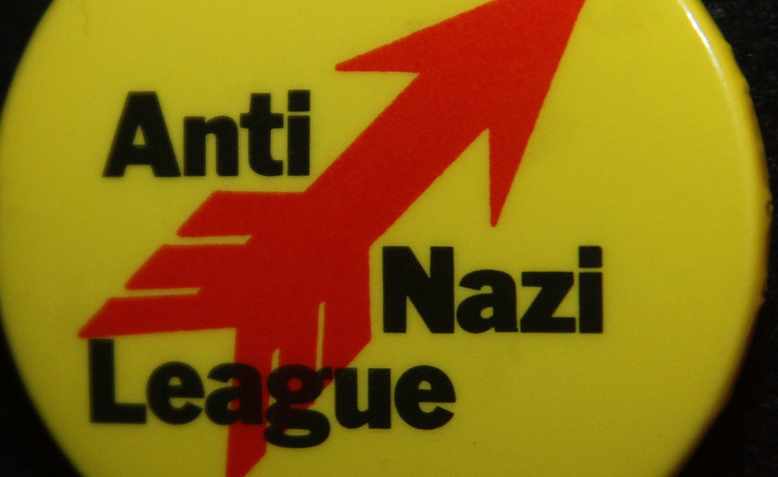 The classic Anti Nazi League logo. Photo: Flickr/People's History Museum
The classic Anti Nazi League logo. Photo: Flickr/People's History Museum
Rubika Shah’s White Riot excellently documents the building of a movement, finds David Randall
I’ve read a lot about the legendary campaign Rock Against Racism. I’ve even written about it a bit. But none of my research quite compares with the impact of seeing the incredible film footage from the time, which has been carefully compiled by Rubika Shah for her excellent new documentary White Riot. The title of the film initially planted doubts in my mind.
It’s understandable that Shah chose the attention grabbing title of the Clash song, but it left me concerned that too much time and credit might be given to one famous band and too little to the network of activists who built the movement. I needn’t have worried. White Riot wisely focuses on the daring, dynamic and wonderfully creative team who coalesced in an East End printshop in the early days of the campaign. The key interviewees are RAR founders Red Saunders and Roger Huddle, early recruits Kate Webb and Ruth Gregory and musicians Dennis Bovell, Pauline Black and Tom Robinson.
Thugs
What will strike those who are too young to remember 1976 is just how confident the far-right National Front were, how disgusting was their rhetoric, how normalised it had become with Enoch Powell and Tory politicians calling for enforced repatriations, and how vicious NF thugs and the police were towards Black and Asian people and anti-racists of all ethnicities. It was war. Thank goodness RAR recognised that culture was one of the weapons that could help win it.
The film quickly becomes a compelling ride through a pivotal and often terrifying period of British history. It’s masterfully crafted with a well-chosen soundtrack and vibrant graphics, and Red Saunders in particular shines with charisma and political clarity throughout.
There are omissions. The role played by political organisations, for example, is underplayed. Many of the key activists in RAR were either members of, or worked closely with, the Socialist Workers Party (SWP), who also set up the Anti-Nazi League after the battle of Lewisham in 1977. But the organisation hardly gets a mention. This matters because it gives the misleading impression that small groups of individuals can pull-off great feats, when in actual fact coordination by a political organisation was critical. It’s also a shame that the contribution made by rank-and-file trade unionists, often as security at RAR gigs, goes unmentioned.
Creative
However, some key political lessons do shine through. The first is that anti-racist campaigns are effective when they are open, outward facing and willing to try new ideas and take risks. They need to be creative, bold, irreverent and fun. The second is that anti-racism has to go beyond liberal platitudes.
The film documents several fantastic examples of clear, anti-imperialist, class politics being advanced in the pages of RAR’s fanzine ‘Temporary Hoarding’. Pieces in the same publication also examined the roots of white supremacist ideas and pointed to the links between racism and other forms of oppression. Finally, perhaps most importantly, the film underscores that this was first and foremost a movement ‘from below’ – one which proved that the actions of ordinary people can change the world.
Join Revolution! May Day weekender in London
The world is changing fast. From tariffs and trade wars to the continuing genocide in Gaza to Starmer’s austerity 2.0.
Revolution! on Saturday 3 – Sunday 4 May brings together leading activists and authors to discuss the key questions of the moment and chart a strategy for the left.

